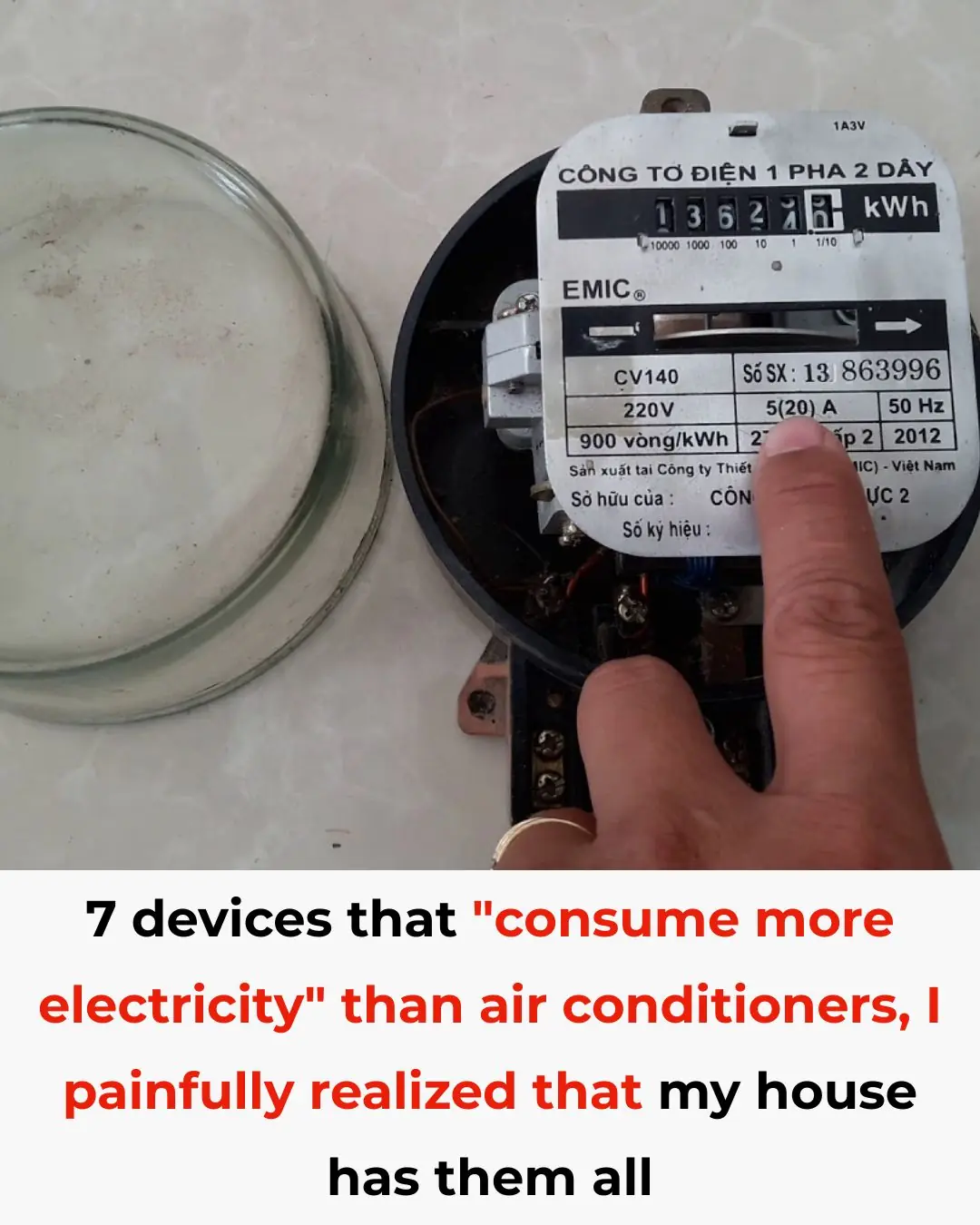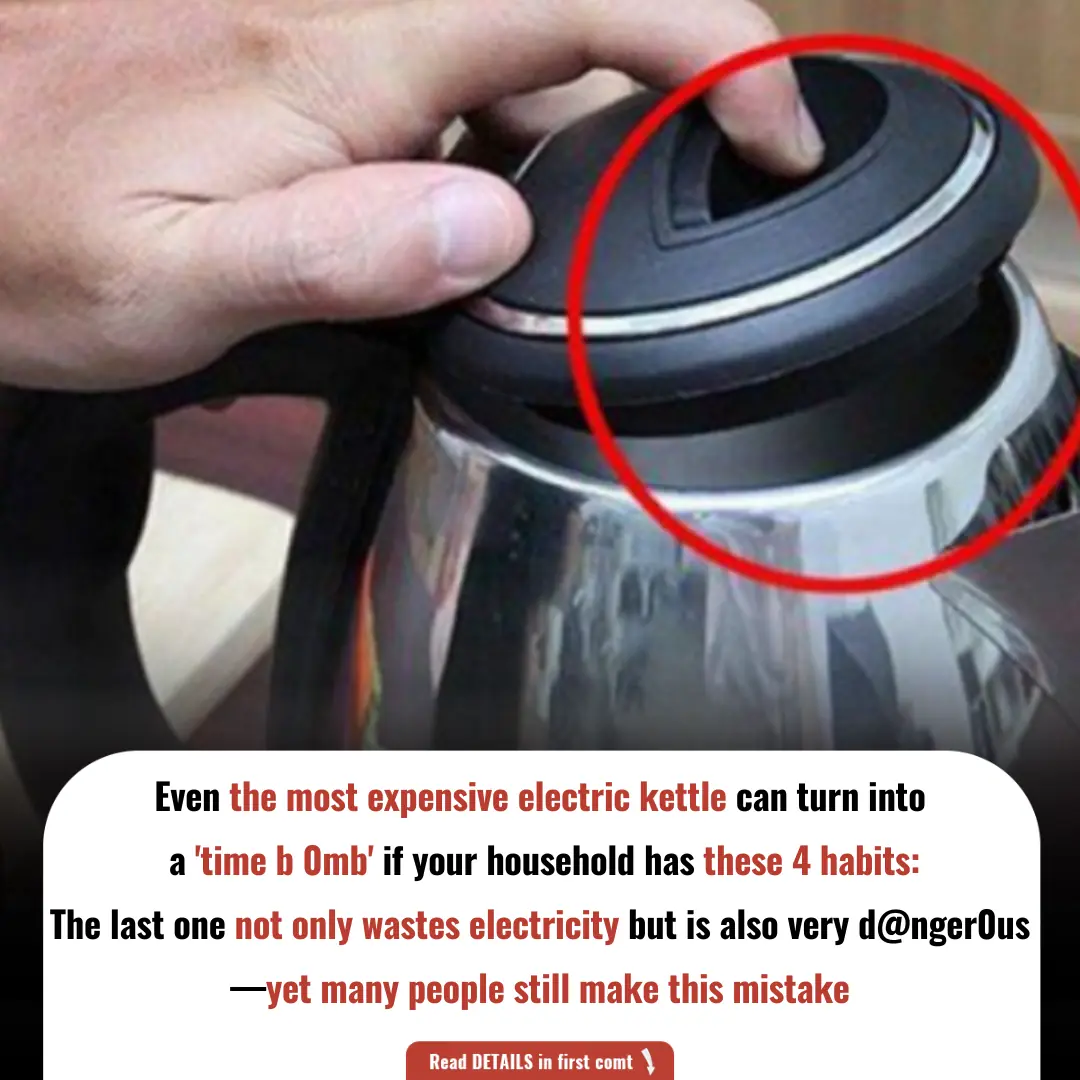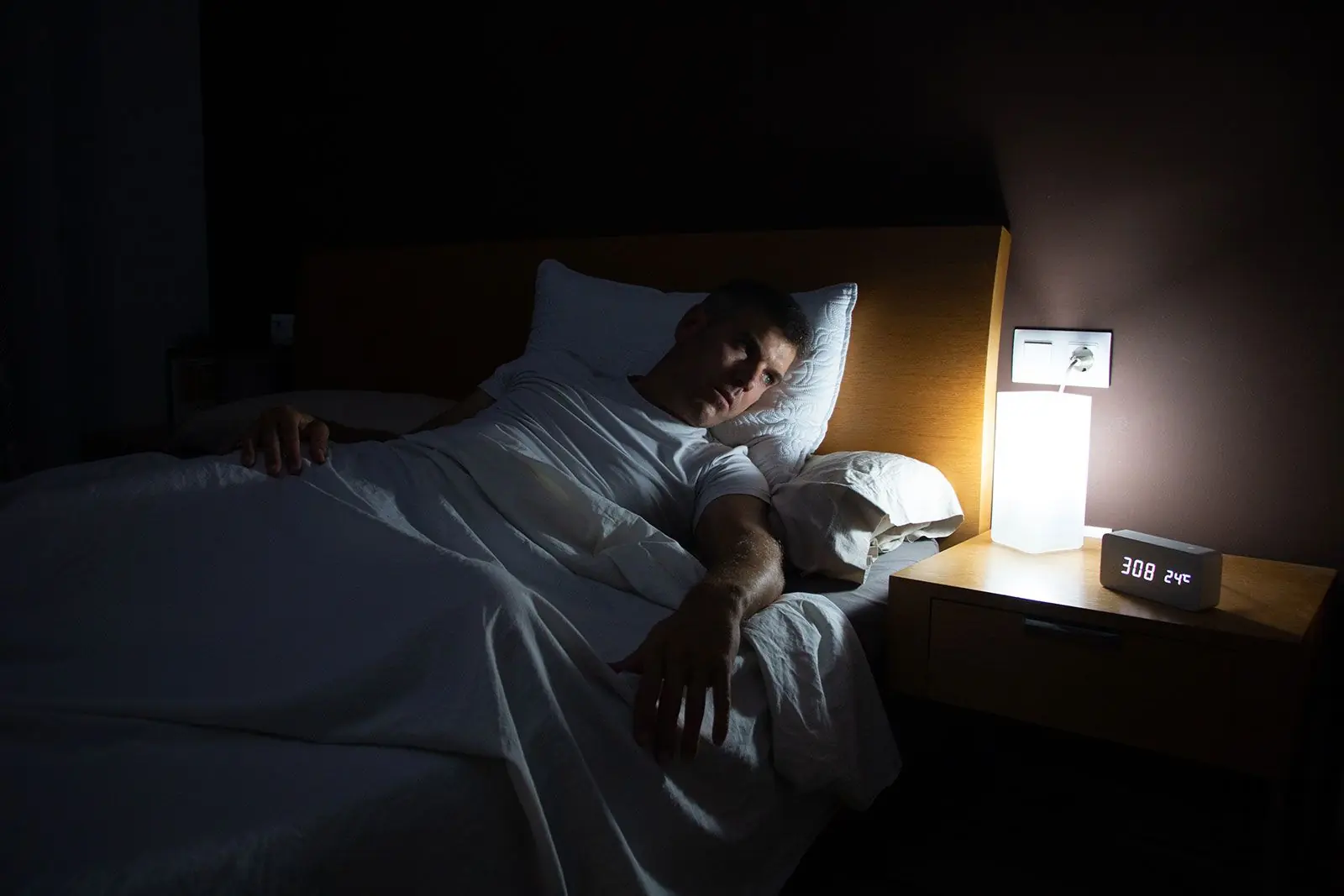
The hidden electricity-draining device at home that few people notice: It consumes more power than a refrigerator or washing machine
When families talk about energy consumption, the first devices that come to mind are usually large appliances such as refrigerators, air conditioners, or washing machines. These are seen as the main “energy eaters” in every household. However, experts point out that there are smaller, less noticeable devices that can silently consume large amounts of electricity. Surprisingly, some of these consume even more power than your refrigerator or washing machine.
One of the most common examples is the electric kettle and similar devices. While convenient and fast, their hidden energy demand often shocks people once they understand the numbers. Let’s take a closer look at why this happens and how you can better manage energy use at home.
1. Why Small Appliances Can Consume So Much Energy
Many people assume that bigger appliances must always use more power. While size and function matter, the actual energy consumed depends on wattage and frequency of use.
-
Wattage: Electric kettles, for example, often have a power rating of 1500–2000 watts. This is far higher than the continuous wattage used by a refrigerator, which usually ranges between 100–400 watts.
-
Duration vs. intensity: While refrigerators run continuously, their compressor cycles on and off, lowering average consumption. An electric kettle, on the other hand, uses its full wattage every time it boils water. Multiple daily uses quickly add up.
This explains why a small, unnoticed device can surpass larger appliances in terms of energy bills.
2. Electric Kettles and Similar Devices
The electric kettle is a kitchen essential for many households. It heats water within minutes, saving time compared to a stovetop. However, the convenience comes at a cost.
Each boil can use as much power as leaving a refrigerator running for several hours. If you boil water multiple times a day—for coffee, tea, instant noodles, or cooking—you may end up using more electricity than you realize.
Other similar devices include:
-
Instant water heaters for showers
-
Induction cookers with high wattage
-
Microwaves for quick heating
These appliances, though small in size, operate at very high wattage for short bursts, leading to significant overall consumption.
3. Comparing With Refrigerators and Washing Machines
Let’s break down the comparison more clearly:
-
Refrigerator: Runs all day, but average power consumption is between 1–2 kWh per day.
-
Washing machine: Each wash cycle typically consumes 0.3–1 kWh, depending on settings. Even with regular use, weekly consumption remains manageable.
-
Electric kettle: Each boil consumes about 0.1–0.2 kWh. If boiled 5–6 times daily, the monthly total can exceed that of a refrigerator.
This shows that the assumption “small device equals small energy use” is misleading.
4. Hidden Costs of Daily Habits
It’s not just about the device itself but also how often it is used. Many households unknowingly waste energy through simple habits, such as:
-
Boiling a full kettle of water when only one cup is needed
-
Repeatedly boiling water because it was left to cool
-
Using instant heating appliances multiple times instead of planning ahead
These small actions, repeated daily, add up to noticeable costs on your monthly electricity bill.
5. Tips to Reduce Energy Consumption
Fortunately, reducing electricity waste does not require giving up convenience. With a few adjustments, you can save both energy and money:
-
Boil only what you need: Avoid filling the kettle to the top unless necessary.
-
Use a thermos: Store hot water in a thermos to avoid reboiling multiple times.
-
Choose energy-efficient models: Look for devices with energy-saving features or lower wattage.
-
Unplug when not in use: Many appliances continue to draw power when left plugged in.
-
Plan cooking tasks: Heat water once and use it for multiple purposes instead of boiling repeatedly.
6. Beyond the Kettle: Other Hidden Energy Consumers
While the electric kettle is a prime example, it is not the only hidden device. Other household items to watch include:
-
Old chargers and adapters left plugged in all day
-
Entertainment devices like game consoles or set-top boxes on standby mode
-
Water dispensers that constantly reheat water
-
Hair dryers and irons, which use high wattage during short bursts
Together, these unnoticed devices can silently raise your electricity bill.
7. Rethinking Household Energy Management
Being aware of these hidden electricity-draining devices is the first step. The next step is creating a household plan for energy management:
-
Track usage: Many smart plugs and apps now allow you to measure exactly how much energy each device consumes.
-
Set priorities: Focus on reducing use of high-wattage devices rather than worrying only about large appliances.
-
Educate family members: Children and adults alike should learn simple habits that conserve energy.
By combining awareness with action, families can significantly cut down unnecessary costs while also contributing to a more sustainable environment.
Conclusion
When people think about electricity consumption, they often focus on large appliances like refrigerators and washing machines. Yet, the real hidden cost may come from smaller, unnoticed devices like electric kettles. Despite their size, these appliances operate at high wattage and, when used frequently, can consume more energy than larger machines.
The lesson is clear: don’t underestimate the power demand of small devices. By paying attention to daily habits and making smarter choices, you can reduce unnecessary electricity use, lower your bills, and still enjoy the convenience these devices bring.
A home that manages its energy wisely is not only more efficient but also more comfortable and sustainable in the long run.
News in the same category


Be careful — one single action at the airport could ruin your en:tire life.

Don't Throw Away That Old Non-Stick Pan! Try This Simple Trick to Make It Like New

Pouring Salt Down the Drain: A Surprising Trick More People Are Trying

3 Simple Ways to Keep Your Home Completely Rodent-Free

7 Household Appliances That Consume More Electricity Than Air Conditioners — I Sadly Realized My Home Has Them All

Four Plants in Your Garden That Attract Snakes Like Crazy — Remove Them Immediately for Family Safety

Tips for pickling white eggplants that are crispy, do not turn black, and do not form scum when left for a long time

How to grow papaya in pots, the fruit is heavy, big and sweet

4 habits that may be silently accelerating your body’s aging process

Eating ginger without peeling it – a lifelong health risk? The surprising truth that shocks everyone.

Boiling perilla leaves with a few stalks of lemongrass gives your body these 7 amazing benefits.

Even the Most Expensive Electric Kettle Can Turn Into a "Time B0 m b" If Your Household Has These 4 Habits

If a Non-Stick Pan Shows These 3 Signs, It’s Best to Throw It Away Immediately to Avoid Health Risks

Fish Sellers Reveal: 2 Types of Fish So Cheap You Should Never Buy, Yet Many People Still Unknowingly Purchase Them

95% of People Don’t Know the Meaning of the Numbers at the Bottom of Plastic Bottles and Containers

Seafood seller warns: Avoid these 4 types of shrimp or risk your health!

Place a bowl of salt in the fridge: A simple yet powerful trick I wish I had known 30 years ago
News Post

5 Delicious Eating Habits That Put the Whole Family at Risk of C:ancer – Extremely Dangerous and Should Be Avoided Immediately

Be careful — one single action at the airport could ruin your en:tire life.

Condolences to those who are using these 4 types of electric kettles: Throw them away while you still can, thousands of people have already developed c:ancer.

How Magnesium Keeps Your Heart Rhythm Healthy

Why Do I Cough When Taking a Deep Breath?

Taking the Stairs Could Help You Live Longer

Purple Veins on Your Legs: When to Worry

Man develops 'pork worms' in his brain after years of doing this specific cooking habit

Signs Your Cortisol Is Dangerously High

Woman who d::ied for 24 minutes before being brought back to life details exactly how it felt

The Sleep Saboteur: The One Thing You Should Never Do When You Wake Up at Night

Nightly Habits That Could Increase Your Risk of Stroke

🚨 ALERT! 7 Strange Signs Your Kidneys Are Crying for Help

Vitamin E Oil uses for Skin – Glowing Skin, Dark Circles & Wrinkles

DIY Aloevera ice cubes to Remove Dark Spots & Clear Skin | Aloevera Benefits for Skin

Tips for pickling white eggplants that are crispy, do not turn black, and do not form scum when left for a long time

11 Secret Baking Soda Tricks for Women That Will Change Your Life!

Mattresses used for a long time are dirty and smelly, sprinkle this on the surface, no need to wash with water, it will be clean as new

‘Healthy Man’ Diagnosed With Cancer After Noticing Dog’s Bizarre Behavior Around Him
